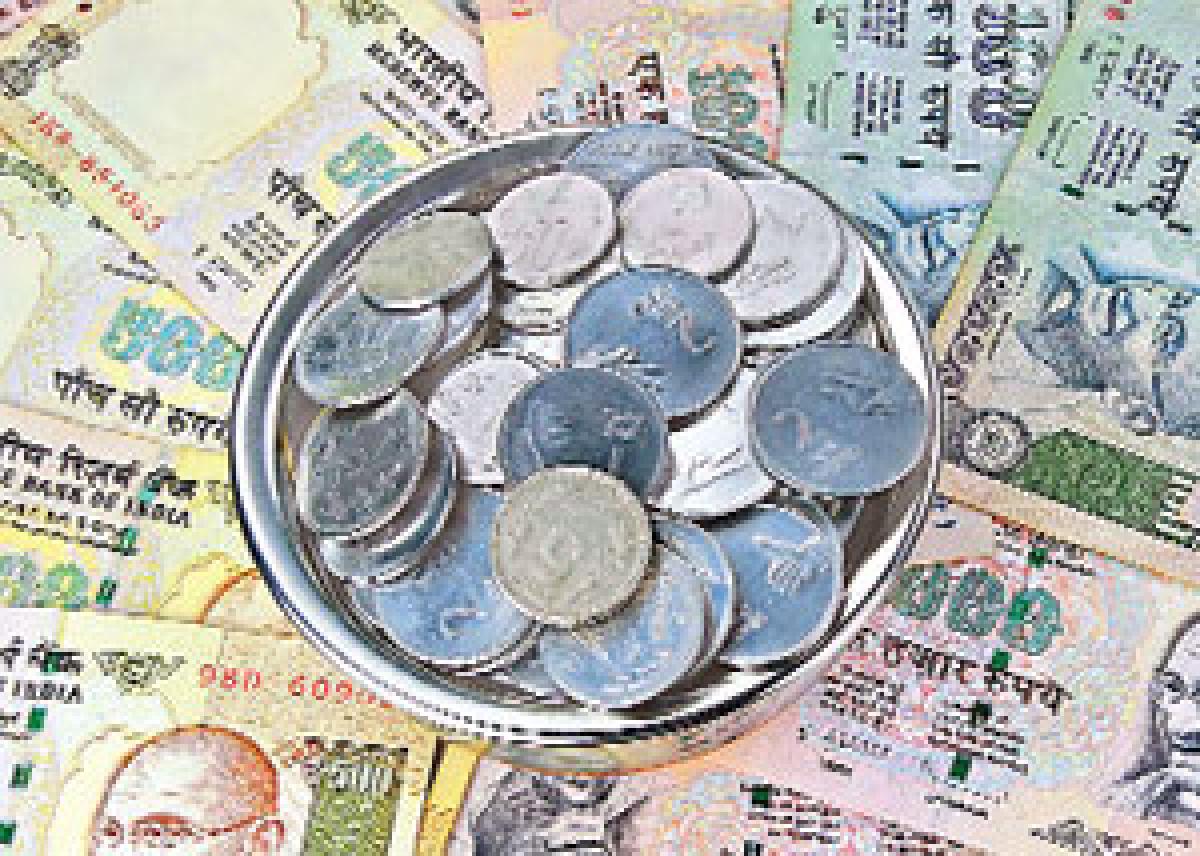Dynamics of changing interest rates

The negative interest rates make borrowing cheap and depositors will have to pay for keeping their money with the banks.
In a globally interconnected world, interest rates are linked normally to the discount rate/rate at which central bank provides liquidity to the banking system. India is presently on a diminishing interest rate curve and RBI repo rate is pegged at 6.50 per cent. All domestic interest rates are then logically intertwined to it. Bank’s lending and deposit rates are therefore correlated to it. Interest rate policy depends on domestic macroeconomic factors and external developments across the globe. The sensitivity of mobility of investments across boundaries (foreign funds) to the dynamics of interest rate variations makes central banks to take into consideration external factors too in deciding their own domestic interest rates. Following the global financial crisis of 2008, US Federal Reserve began its bond-buying program, called Quantitative Easing (QE) in 2009 to infuse liquidity in the system and to revive the sagging economy. It ended QE in October 2014. It also continued it’s near zero interest rates for a decade till December 2015 when it raised its interest rates by 25 basis points. These two events - tapering and eventually ending its QE and raising interest rates in the first step by 25 basis points - influenced global financial markets, particularly, the emerging markets differently. Any variations in interest rates significantly causes tectonic shift in global investments from low interest rate nations to better interest rate nations. Still, India is comfortable in terms of interest rates and exchange rate volatility that led to forex reserves breaching $360 billion mark.
Keeping in view the impact and likely volatility in financial markets, every central bank as the custodian of stability of financial markets makes quick interventions to ring fence its markets against external shocks and to prevent erosion of domestic wealth. Considering domestic view point, while the borrowing community seeks lower interest rates, the investing public (depositors) wants higher interest rates. On the contrary, central banks as a professional regulator remains neutral as far as preference is concerned and it decides interest rates as a derivative depending on macroeconomic and external factors to ensure that it continues to support growth of the economy while remaining its stance as a good global central bank respecting the sentiments of its peers. The phenomenon of negative interest rates is not new but in order to revive moribund economies, some of the central banks consider pursuing easy money policy.
Negative interest rates
Thus, negative interest rates are meant to step up supply of easy liquidity to support speedy revival of growth of the economy to address large scale slow down of the economy stemming from global financial crisis. The most counter -intuitive of all monetary policy tools is the negative interest rate. It is now being implemented in various major economies on an unprecedented scale. Right now, countries that account for close to 30 per cent of global Gross Domestic Product (GDP) have negative policy rates. The European Central Bank imposed negative rates in 2015, charging commercial banks to hold money overnight. Switzerland, Sweden and Denmark and other European nations outside the euro zone also introduced negative rates to stay in sync. The Bank of Japan announced a negative rate in January 2016, charging banks money if they maintained reserves in excess of statutory requirements. In addition, Canada's central bank governor has indicated that the bank would not be averse to a negative rate. Even the US Federal Reserve, which raised rates in December, is conducting stress tests to assess the possible impact of negative rates on short¬term US treasuries. The negative interest rates make borrowing cheap and depositors will have to pay for keeping their money with the banks.
The impact
Whenever interest rates are raised in a country and dropped in another, the foreign investments may change its destinations. Foreign investments always chase higher interest rate economies assessing yields net of country risk and potential policy outlook. Of course, the degree of openness of a country will always be a defining factor apart from interest rates. The dynamics of interest rates shift such investments, exit from low interest economies to better interest economies that causes imbalance in forex reserves leading to currency volatility. The US Fed is keenly observing the revival process of the economy and is examining possibility to raise rates in next leg provided the robustness of macroeconomic stability is convincing. The US seems to have prepared to raise interest rates again if US growth affirmatively stays strong.
Any divergence in central bank policies will accentuate existing interest rate differentials. Negative interest rates are akin to an act of last mile effort to revive the gasping economy. In theory, negative rates offer an incentive to lend and spend. Hence, these should stimulate demand, and combat deflationary tendencies. A negative rate may also weaken the currency (assuming it is easily convertible) by offering an incentive to exit. It can lead to short-term bond yields going negative. On the downside, negative rates reduce bank profitability since banks absorb the impact of the negative rate, while paying some positive rates to depositors.
Need for real interest rates
A real interest rate is an interest rate that has been adjusted to remove the effects of inflation to reflect the real cost of funds to the borrower, and the real yield to the lender. The real interest rate of an investment is calculated as the amount by which the nominal interest rate is higher than the inflation rate. In a low inflation environment, the interest rates of central bank will be low. But net of inflation, the yield tends to be positive. Hence in any given interest rate scenario, the investor (depositor) has to look at yield net of inflation to assess the yield accruing in the form of purchasing power. Globally, the real interest rates are range bound between 1 to 1.5 per cent. Any amount of interest rate cannot provide the positive impact if inflation rules high. A high interest rate with high inflation may be counterproductive for the economy. It can only be a temporary remedy that needs to be corrected, once normalcy is restored.
Hence, RBI and government in collaboration is keen to rein in inflation on the glide path that sets target to contain inflation at 5 per cent by end of FY17 and 4 per cent by the end of FY18. Hence, the interest rates in India, way forward are set to remain low. Understanding the changing dynamics of interest rates, depositors should be happy so long as their real rate of interest, net of inflation is positive. The long-term impact of low interest rates will bring down the cost of production of various commodities in the economy that will help bring down inflation further in addition to infusing export competitiveness. But it is a highly challenging task for a central bank to maintain a sustainably low inflation and low interest rates that can support growth agenda, keeping in view the sensitivity and complexity of its dependencies.
Dr K Srinivasa Rao














